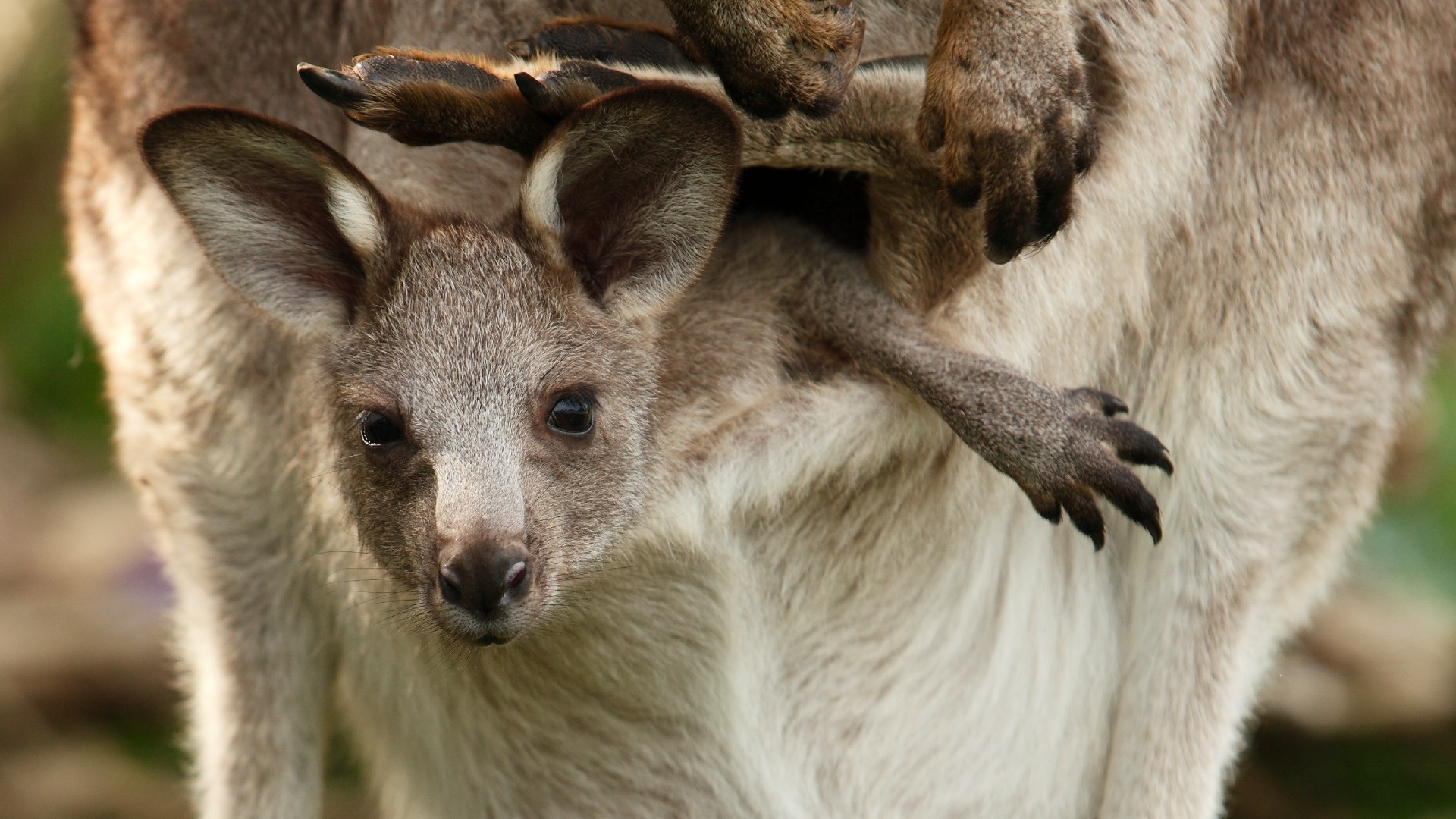
What's it like inside a kangaroo pouch?
And how does mama clean it when it gets dirty?

Although many marsupials raise their young in pouches — including opossums, Tasmanian devils and even koalas — kangaroos are almost certainly the most iconic.
So what's it like inside a kangaroo's pouch?
Think of the kangaroo's pouch as a hoodie sweatshirt put on backwards, said Rick Schwartz, an animal care supervisor and national spokesperson at the San Diego Zoo. The hood of the sweatshirt is the pouch, and the drawstrings are the mother's muscles she uses to open and close it. "It does open up quite a bit if she wants it to," Schwartz told Live Science.
Related: Why are there so many marsupials in Australia?
The inside of the pouch is the texture of the kangaroo's skin, but hairless. It's soft and comparable with the skin on the inside of a person's wrist, Schwartz said. The pouch is very warm inside, the same as the mom's body temperature: about 105 degrees Fahrenheit (40.5 degrees Celsius). Because of this, it can get sweaty in there.
The pouch contains four teats, or milk ducts. When a mama kangaroo gives birth to a joey through the vaginal canal after 32 or 33 days of gestation, her baby is extremely undeveloped. About the size of a jellybean and weighing less than a gram, the newborn joey uses its forelimbs to crawl up into its mom's pouch. There, it latches onto an elongated teat, which swells and pokes down the throat of the baby, holding it in place for about three-and-a-half to four months, Schwartz said.
The joey stays inside the pouch for about four-and-a-half to five months before emerging, and then it begins to explore, always staying close to its mother, before returning to her pouch, Schwartz said. Over the next several months, the joey begins exploring farther away and for longer durations, and at around 8 months old it really gets adventurous. The joey weans between 10 and 12 months, at which point it no longer hops back into the pouch.
Sign up for the Live Science daily newsletter now
Get the world’s most fascinating discoveries delivered straight to your inbox.
Because the joey spends months in the pouch before emerging, it defecates inside. Later in development, because it is coming and going to explore, the joey tracks dirt in, Schwartz said. That means the mama kangaroo needs to do some housekeeping. To clean the pouch, she sticks her whole head in to scrape out the grime and droppings with her tongue, either working around a young joey or kicking out an older one while she works.
Kangaroos give birth to only one joey at a time. But when they mate, if it's not the right conditions to raise a baby in — for example, if there's a drought — the animal's body will hold off on implanting the embryo into the uterus. Then, when the time is right, the embryo comes out of dormancy, and the mother begins gestation, Schwartz said.
The female kangaroo can give birth to up to four young over the course of a year or longer from just one instance of mating, he added. She may give birth to one joey, then her body will delay implantation of the next embryo until the first joey is a few months old and spending time outside of the pouch. "Her body can produce the right kind of milk nutrients for an 8-month-old, and the other teat can create the proper nutrients for a newborn," he said.
Originally published on Live Science.

Tyler Santora is a freelance science and health journalist based out of Colorado. They write for publications such as Scientific American, Nature Medicine, Medscape, Undark, Popular Science, Audubon magazine, and many more. Previously, Tyler was the health and science Editor for Fatherly. They graduated from Oberlin College with a bachelor's degree in biology and New York University with a master's in science journalism.









